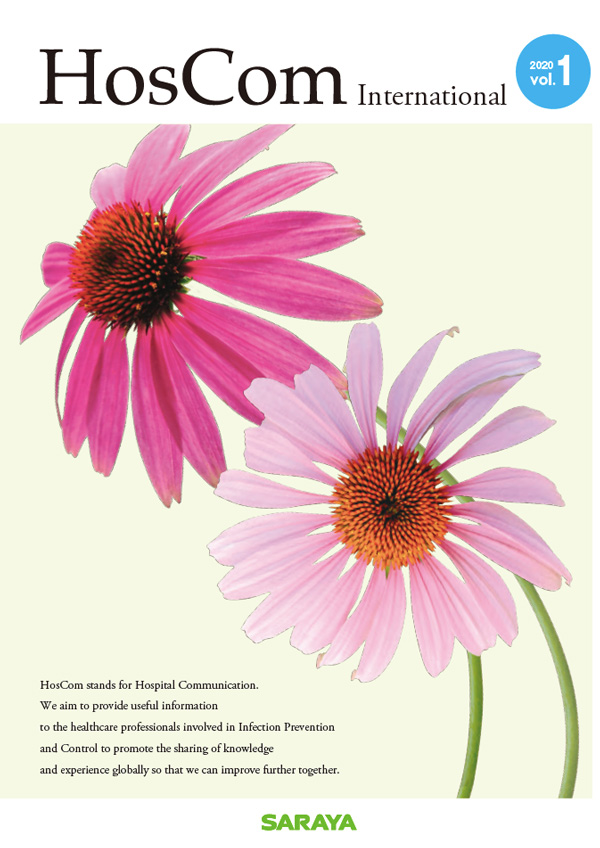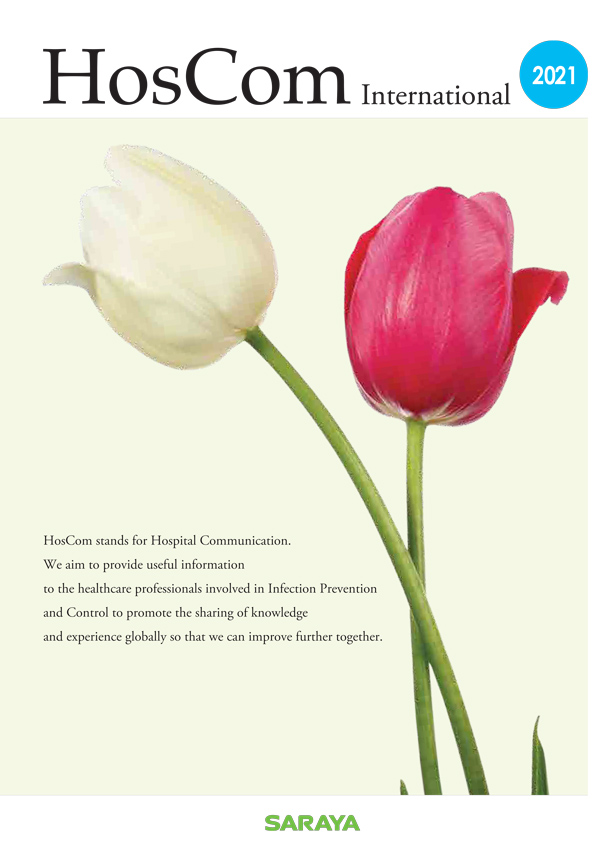The Best Healthcare Hygiene
Saraya Healthcare Hygiene combines all aspects of Infection countermeasures through hygiene, medical device reprocessing, surface cleaning, and disinfection. We are also a major contributor to education and research on infection prevention and control. Saraya publishes quarterly magazines, handbooks and manual posters. In addition, we offer live support through lectures and scholarly presentations, backing up the infection prevention and control field with our own research.

Hand Hygiene
The two leading sets of guidelines on hand hygiene in healthcare settings are published by the World Health Organization (WHO) and the Centers for Disease Control and Prevention (CDC). These guidelines have been prepared to improve patient health and safety through correct, evidence-based hand hygiene. Each guideline is a compendium of critical knowledge, data and know-how on hand hygiene in the medical field.
If hands are not visibly soiled, hand disinfection is recommended for routine hand antisepsis in healthcare settings. When handrub is not available or hands are visibly soiled, wash hands with soap and water.
Hygienic hand antisepsis consists of hygienic hand wash and hygienic handrub, and the objective is to reduce the transient microbial flora, while surgical hand antisepsis is to eliminate transient flora and reduce resident skin flora before surgical operations.
Wet hands with water and apply a sufficient amount of soap necessary to cover all surfaces. Rinse hands with water and dry thoroughly with a clean single-use towel. It requires 40 to 60 seconds to achieve effective hand washing.

Apply adequate amount of alcohol based handrub and cover all surfaces of the hands. It requires 20 to 30 seconds to achieve effective hand disinfection.

For appropriate timing of hand hygiene, the concept of 'My 5 Moments' can be utilized. Find more about My 5 Moments.
Each year, the SAVE LIVES: Clean Your Hands campaign calls for action to support of hand hygiene improvement globally. SARAYA actively participates in this event each year, and we ask you to do so with us.

Environmental Management
Frequently touched surfaces that pose an infection threat to healthcare workers and patients should be regularly disinfected after skin contact since they could potentially contribute to the transmission of infectious microorganisms. The cleaning and disinfection of patient-care environment is vital, especially in the most likely to be contaminated places such as bed rails and doorknobs.
Environmental surface is considered as one of the non-critical items, thus high-level disinfection is not required. The frequency and intensity of cleaning are based on the patient's level of hygiene and the degree of environmental contamination.
Frequently touched surfaces in the patient care environment such as doorknobs and bedrails are recommended to be cleaned on a more frequent schedule compared with other surfaces.
Select effective cleaner and disinfectant for proper environmental management such as Saracide from SARAYA. Use in accordance with the manufacturer's instructions for amount, dilution, and contact time, as these are important to have the expected efficacy.
It is recommended to establish policies and procedures in individual healthcare facilities for routine and targeted cleaning and disinfection of environmental surfaces according to the level of patient contact and degree of soiling.

Medical Device Reprocessing
Medical device reprocessing is one of the essential components of infection prevention and control. For smooth operation of devices and safe patient care, thorough cleaning is important prior to disinfection or sterilization. Saraya's medical device reprocessing products are developed to provide healthcare facilities with multiple washing and disinfection options for proper and effective reprocessing.
Medical devices are categorized as Critical, Semicritical and Noncritical items according to the degree of risk for infection involved in the use of the items. Each category requires different reprocessing methods including cleaning, disinfection and sterilization.
Cleaning is the removal of visible soil such as blood and body fluids from devices and is normally accomplished using water with detergent or enzymatic products such as SARAYA Power Quick Series.
Disinfection is a process that eliminates many or all pathogenic microorganisms, except a large number of bacterial spores, from devices. Usually, liquid chemicals such as Acecide or wet pasteurization are used in healthcare settings.
Sterilization is a process that destroys or eliminates all forms of microbial life including bacterial spores. Usually, steam under pressure, dry heat, EtO gas, hydrogen peroxide as plasma and liquid chemicals are commonly used in healthcare settings.

Education & Promotion for Healthcare Hygiene
To reduce medical adverse events, the WHO launched the Global Patient Safety Program in 2004. As part of its first challenge to improve patient safety worldwide, the WHO started engaging in the "Clean Care is Safer Care" program to promote hand hygiene since 2005.
SARAYA supports the WHO action for the promotion of Patient Safety all over the world as a member of Private Organisations for Patient Safety (POPS) which is a collaboration association between the World Health Organization Patient Safety Programme and industries.
Download our full collection of useful tools for improving infection prevention and control in your facilities.
In case you need more information, please feel free to contact us.
Pracujemy na poprawą zdrowia, środowiska i warunków sanitarnych na świecie.
PRODUKTY
MEDIA SPOŁECZNOŚCIOWE

© Copyright 2024 SARAYA Poland Sp. z o.o. Wszelkie prawa zastrzeżone.

